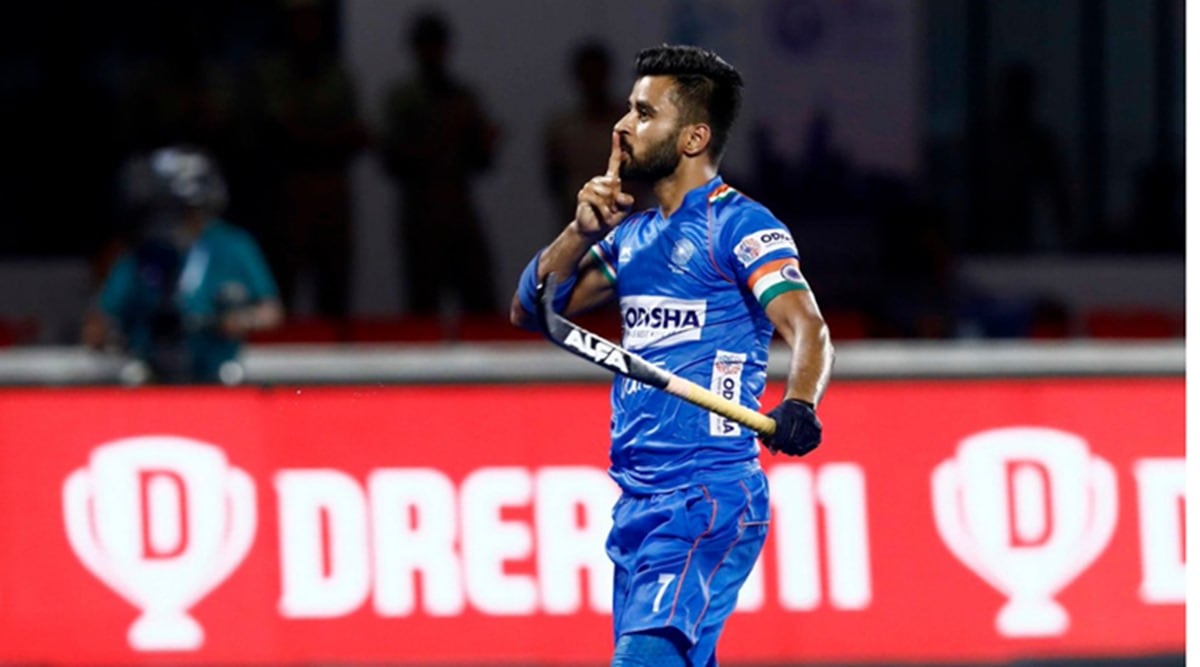 But they are yet to merge with the rest of the players, who have begun ‘sporting activities’. (FILE)
But they are yet to merge with the rest of the players, who have begun ‘sporting activities’. (FILE)For the next six-to-eight weeks, the heart and lung conditions of the Indian hockey players, who have recovered from Covid-19 disease, will be closely monitored. A raft of tests – from electrocardiograms to pulmonary function tests – will be carried out at regular intervals and their workload could see a sharp reduction in the coming months.
This cautious approach has been necessitated because of very little material available on how much impact can the novel coronavirus have on an elite athlete and concerns raised by medical experts that some of the effects could be ‘career-ending.’ In milder cases of Covid-19, doctors say they have noticed cases of ‘weight loss, weakness, nutritional problems and easy fatigability’, all of which could affect an athlete.
Five of the six players, including captain Manpreet Singh, who had tested positive for the virus upon returning for the training camp at the National Centre of Excellence in Bengaluru, completed their post-recovery isolation period on Wednesday. But they are yet to merge with the rest of the players, who have begun ‘sporting activities’ – a bureaucratic term used for light, socially-distanced training during the pandemic.
“Initially, their workload will be different (than rest of the players),” chief coach Graham Reid says. “We have been reading up on how the players elsewhere are returning after recovering from the infection. But the more you read, the more you discover that it is still very early days. They are starting to get a body of data for normal people but not elite athletes.”
It’s a challenge a lot of trainers are facing worldwide.
There is growing evidence, infectious disease experts and pulmonologists say, about the effects of Covid-19 on the heart and respiratory systems. These studies have not been athlete-centric, but their findings can have implications.
Risk factors
Dr SK Chhabra, the pulmonary medicine head at Delhi’s Primus Hospital, says one of the fallouts of Covid-19 is there is a scar on the lungs. “The condition is called lung fibrosis. If the scar is large, then it will reduce the lung capacity,” Dr Chhabra says. “Once the lung capacity is reduced, then the capacity to exercise is reduced as well. So if it’s an extensive scar formation, then the players will have breathing difficulties when they run fast and that will impair their ability to play.”
In hockey, especially, speed is a significant factor. The matches are played at an extremely high pace, the players have to make extra efforts to bend a bit while running, which can be energy-sapping. In fact, the Indian team’s progress in the last few years is largely attributed to their improved fitness and the speedy counterattacks are one of their hallmarks.
There isn’t conclusive data available on how Covid-19 can impact an athlete’s heart and lungs. Recently, a paper published in the Journal of American Medical Association revealed that 78 per cent of middle-aged patients who had recovered from Covid-19 (two-thirds of whom had mild or no symptoms) developed some kind of cardiac abnormalities and 60 per cent showed inflammation of heart muscles.
Dr Chhabra adds that in patients aged over 45-50 years, the lung capacity in severe cases of Covid-19 had reduced to as much as 60 per cent.
But in both cases, there isn’t enough data available to conclude how Covid-19 can impact an athlete’s lungs. “(But) There could be some players whose career would end with this,” Dr Chhabra warns. “It depends on the severity of the disease. Fortunately, all these players are young and healthy. Because they don’t have any underlying disease, the risk factor is not there.”
Regular screening
One way to understand the impact Covid-19 has had on the six hockey players, if any, is constant monitoring. Reid says the medical experts from a Bengaluru hospital are helping the team to work out a testing programme for the initial six-to-eight weeks. “These tests will be things like an electrocardiogram… Standard tests, but it gives you an idea of where they are now, whether there has been any damage to lung capacity, heart muscles, and all those sorts of things. It will be a real team effort as to how we best bring them back as slowly and safely as we can,” Reid says.
Dr Chhabra says the screening should be done routinely for up to six months after recovery. He shares a long to-do list for the returning players. “With these players, they should have chest x-rays and see if it shows any scar, a CT scan of the chest may be required and then they should have a lung function test,” he says. “This should be followed-up with their weight (management), so nutritional deficiencies should be covered up. This should happen for five-six months after recovery post-Covid. Even if it shows 100% recovery, the monitoring should continue. And after that, there should be a pulmonary rehab, which means they should do some breathing exercises.”
Reid adds that the team management is in no hurry, given the national team does not have any engagements this year.
Apart from Manpreet, the other players who had been infected and have now recovered are goalkeeper Krishan Pathak, defender Varun Kumar, midfielder Jaskaran Singh and forward Mandeep Singh. Defender Surender Kumar had to be readmitted last week after a blood clot formed in his arm.
“We will certainly be on the conservative side,” Reid says. “It’s their health, their future, their life. The most important part is the athlete’s welfare and that will be a guiding factor in our decisions.”